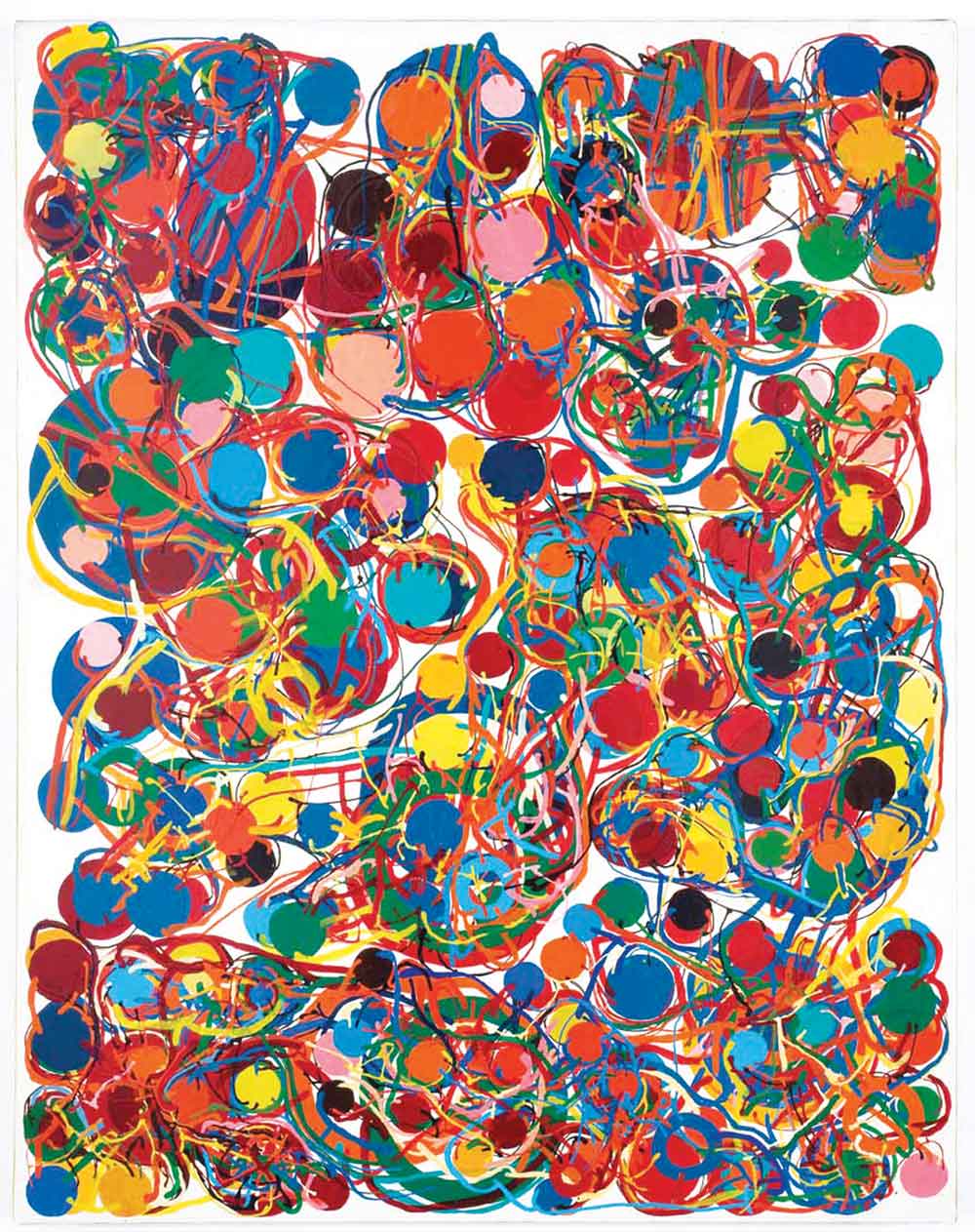« Reviews
A Visual Essay on Gutai
Hauser & Wirth - New York
Curated by Midori Nishizawa
By Paul Laster
An avant-garde art movement that developed in postwar Japan, Gutai was founded by Jiro Yoshihara and a group of young artists from Osaka and Kobe in 1954. A self-taught artist and son of a wealthy Osaka merchant, Yoshihara called for a style of “art that has never existed before.” Embracing ideas of experimentation and forms of abstraction that often involved physical action, the members of the Gutai Art Association explored the relationship between art, the body, time, and space with little knowledge of the parallel movements of Abstract Expressionism and Happenings in America and Spatialism and the Zero Group in Europe. In the process, the Gutai artists ended up making work that anticipated Arte Povera in Italy and the Conceptual and Performance art movements worldwide.
The group’s initial exhibitions, as well as its first publications, premiered in 1955; and by the following year there was a manifesto and several associated members appeared in a photograph in Life magazine. Within a few years, BBC would be filming the Gutai artists at work, while many of them would be showing in Turin, Milan and Paris. However, it was a 1957 visit to their Japanese studios by the influential French curator and art critic Michel Tapié, who was famous for his essay “Un art autre” (”Art of Another Kind”), that led to the launching of the group on an international stage and its groundbreaking, 1958 exhibition at the seminal Martha Jackson Gallery, which was located at 32 East 69th Street-coincidentally, the current site of Hauser & Wirth in New York.
The Hauser & Wirth exhibition, which was curated by Midori Nishizawa and organized with Olivier Renaud-Clément, began with two late canvases by Yoshihara. Works from the mid-’60s of expressionistic circles painted on primary grounds, they represent a period of renewal for the Gutai founder, whose death in 1972 brought an end to the group. Yoshihara’s paintings were accompanied by several, early Gutai works on paper, including a pair of Shozo Shimamoto ink drawings of arrows going in multiple directions and a colorful Akira Kanayama piece of overlapping, curvilinear lines made by attaching felt tip pens to a toy car that the artist maneuvered over the paper via remote control.

Atsuko Tanaka, Work, 1969, Vinyl paint on canvas, 45 5/8” x 35 7/8”. © Ryoji Ito Photo: Antonio Maniscalco. Courtesy Hauser & Wirth.
Equally as experimental on canvas, Shimamoto’s Bottle Crash (1962) was made by shattering glass bottles of paint directly on the canvas, which was situated on the floor of the artist’s studio-a common approach to painting and drawing that was used by most of the Gutai artists. Sadamasa Motonaga poured his lively abstract canvases, while Saburo Murakami mixed paint with plaster to get a more modeled effect and Kazuo Shiraga - the most famous of the group-pushed paint around with his feet. Shiraga’s Green Fan (1965) painting, which has layers of oils smeared on canvas-anticipating Gerhard Richter’s abstractions by decades-was counterbalanced with Red Fan, one of Shiraga’s rare sculptures made with red lacquered tissue paper folded like a traditional fan, from the same year.
A number of fascinating pieces by early and late Gutai members round out the rest of the show, but the two women artists in the exhibition are standouts. Atsuko Tanaka, who will forever be remembered for her Electric Dress (a 1956 suit of sockets, bulbs and wires that covered her body) was represented by diagrammatic paintings and a work on paper that colorfully referenced circuit boards and electrical systems. Meanwhile, Tsuruko Yamazaki had a pair of energetic abstractions made with thrown dyes on paper that she then economically mounted on wood and covered in plastic-an effect that makes the pieces look like they were dipped in resin-and a trippy wall work, made from sheets of tin that were fitted together and lit with colored lights, that speaks volumes for the unchartered paths the Gutai artists persuasively followed.
(September 12 - October 27, 2012)
Paul Laster is the editor of A+, a blog by Artspace.com, and a contributing editor at Flavorpill.com, ArtAsiaPacific, and ArtBahrain.org. He is a contributing writer for Time Out New York, Art in America, Modern Painters, New York Observer, and TheDailyBeast.com.
Filed Under: Reviews



































Leave a Reply
You must be logged in to post a comment.